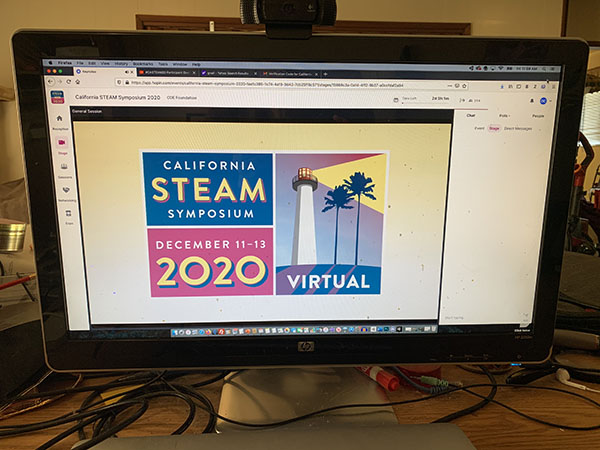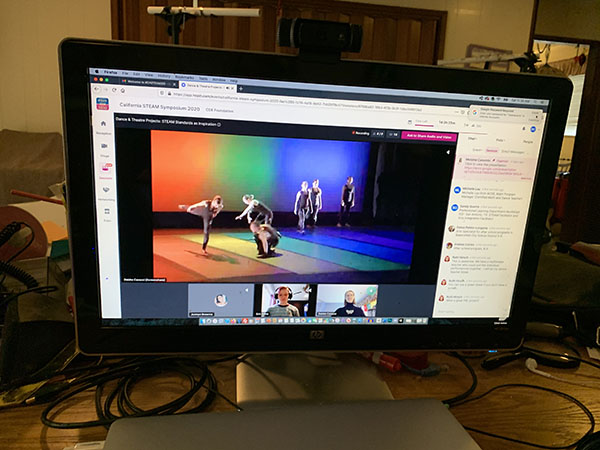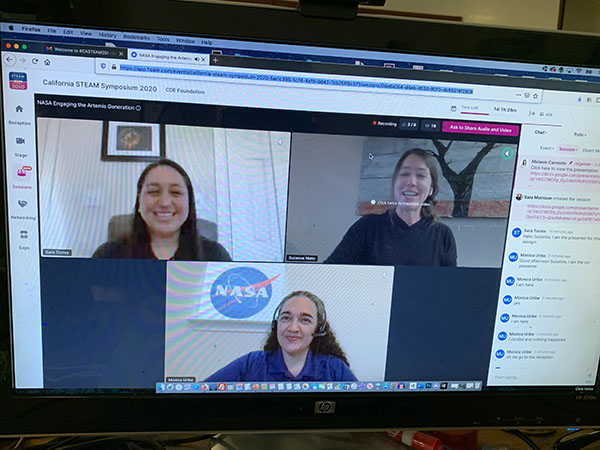by Dot Cannon
What limitations are you currently facing? OK, now how are they enhancing your creativity?
Yes–you did read that right.
And that was the premise of “Artist for the People” Phil Hansen‘s opening keynote on Saturday morning.
The eighth annual California STEAM Symposium was embarking on Day Two of its first all-virtual edition.
In his keynote, Phil, who is an author, speaker and innovator, took his audience on a highly interactive journey.
“In high school, I was able to take my first art class,” he said. “I fell in love with pointilism…I was so obsessed with it, eventually it led to a tremor in my drawing hand.
“What had once started out as these beautiful, perfect little dots looked more like tadpoles.”
Phil said he gave up drawing. Then, a few years later, a friend convinced him to go to a neurologist.
But the neurologist gave him an unexpected diagnosis: nerve damage.
Then, to Phil’s surprise, the neurologist said, “Why don’t you just embrace the shake?”
A new pathway
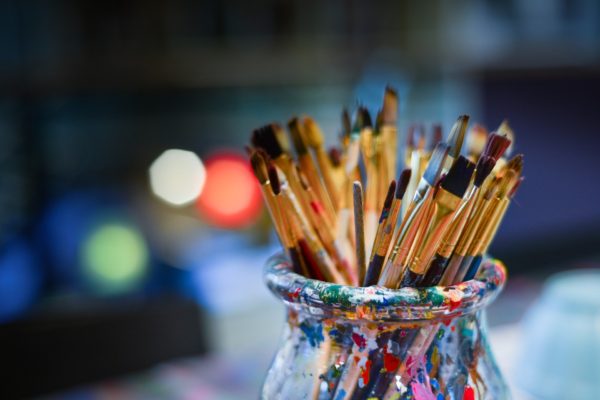
(Royalty-free image by Rudy and Peter Skitterians from Pixabay.)
That question ultimately led to what Phil does today, as an artist.
“I realized I could still make art,” he said. “That was the first time in my life that I realized, limitation could actually drive creativity.
“From there, I made the leap (and thought), ‘well, what if I actually created limitations for myself?”
He did exactly that–creating a number of projects.
Phil showed his audience videos of a series that he called “Goodbye Art”. He had set himself the rule that each piece had to be destroyed after its creation.
Among the pieces in the videos were a likeness of Jimi Hendrix, made of matches–which he then burned. There was also a portrait made of frozen wine, which melted. A third piece was made of lighted candles on a table, which were organized, lit–and then blown out.
“So right now,” Phil continued, “I’d love you to think about, what is a constraint that you’re faced with?”
Then, he engaged the audience in several exercises. The first: a group art project.
“I want you to boil (that constraint) down to a single word. Write that word as small as you can. Put a little box around that word (and scribble all around it).”
Phil directed the audience to submit their words to his website, where he’ll create an art piece based on the words he receives.
Creativity and a “system”
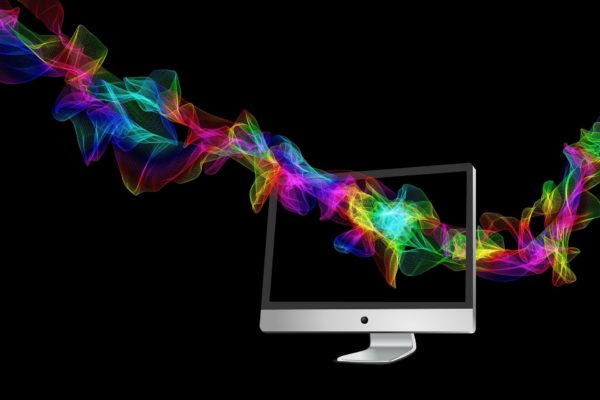
(Royalty-free image by Gerd Altmann from Pixabay.)
Next, Phil and the attendees explored the concept of “systematic creativity”.
“You take something from the past and you analyze it,” he explained. “You actually just start to connect different things.”
Showing a series of cartoons he had created in what he called his “time as a failed cartoonist”, Phil boiled the situations in the cartoons down to single words.
“Pick two things, draw a cartoon and enjoy the tunes,” he directed.
The attendees complied, coming up with unique images like a shark in bed and a candle burning down artwork in a museum.
“This isn’t just about coming up with cartoons,” Phil said. “(This process) causes your brain to think in an unusual way.
“When you come up with weird ideas, that’s where innovation comes from.”
STEAM and the stage
Innovation and interconnection also shone through the morning’s first breakout session, “Dance and Theatre Projects: STEAM Standards as Inspiration”.
As lead presenter, Saddleback College Dance Department Chair Deidre Cavazzi illustrated how she used her background in marine science to create new work.
“Science communication is something that has always been really, really important to me,” she said.
Her co-presenter, Erin Milne, shared a student’s perspective. Erin, a student choreographer, is just about to graduate from Saddleback College, and had participated in the last three performance projects Deidre created.
And all of them were highly collaborative with other departments besides performing arts.
First, Deirdre discussed the “who, what, when, where, why and how” of creating a collaborative project.
“The first thing you want to start with, is to figure out who your collaborators are,” she said.
“…The thing I get most excited about, is when I see connection between different fields. You can use these thematic structures to find inspiration.”
Collaboration in isolation
Deirdre and Erin discussed the connection of different fields on their recent project, “Signals and Circuits”. This was a dance piece created since the pandemic, as a completely digital offering. Its subject: the brain.
Deirdre explained that she connected with neuroscientists in Ireland for inspiration. The music department created original music for the piece, with the instructor selecting the strongest compositions to submit. The dance department invested some funds in “green screens” which students picked up and took home.
And students rehearsed entirely in Zoom.
“We rehearsed without music,” Deirdre said. “The music was being created separately by the students. Students were never together. Everything was created in Premiere Pro, then we used aftereffects.”
“It was so interesting and exciting, how much we could achieve, even though we were never in the same room together,” Erin said. “…I think what was the best part…was the opportunity to be with my friends.
“There were so many elements of surprise,” she continued. “I didn’t know what the final piece was going to look like. (Or) what the music was going to sound like, what the green screens would look like.”
But with all the surprise, “Signals and Circuits” worked well.
“These technical tools are going to be with us postpandemic,” Deirdre said.
Interdisciplinary creativity
Additional recent projects which Deirdre and Erin discussed included works that brought together Saddleback’s departments of environmental studies, ceramics, English, and even physics. And performances were not necessarily confined to a stage. For one composition, performed in a library, students toured the city.
In addition, students in the compositions were not strictly performing-arts majors.
“In some years, we’ve had students who’ve been in a physics class, (a biology class or a math class),” Deirdre explained. “Bringing together all of these different ways and really finding wasy to make this a crucible of an experience, where everybody is learning together.”
Diversity as a superpower

(Royalty-free image by F. Muhammad from Pixabay.)
“We don’t really invest equally in the talents of all our children,” said the afternoon keynote speaker, Public Policy Expert Heather McGhee.
In a fireside chat with CDE Foundation California Teacher Residency Lab Program Director Jacquelyn Ollison, Heather outlined the underlying causes of racial inequity.
?We were really founded, in the U.S., on a belief in that lie…that different groups of people are worth more than others. We have not truly shaken free of (thsi idea).”
Heather, who spent nearly two decades helping to build racial-equity nonprofit Demos, has a new book, Some of Us: What Racism Costs Everyone and How We Can Prosper Together, coming out in February.
And she and Jacquelyn discussed the central metaphor of the book: the drained pool.
“(The book covers) a three-year journey that I took, to answer the question of why we can’t have nice things,” Heather said. (“Nice things”, she explained, included affordable health care and well-appointed schools, in every community.)
“In so many instances, racism was at the heart of our country’s dysfunction,” she continued. “We had over 2,000 pools in this country, …built in the ’20’s and ’30s. Often, whites-only. In the civil-rights era, many municipalities drained their pools, rather than integrate them. (And everybody lost.)”
In her research on the book, Heather found that people were ready for change.
“Everywhere that I went, I found that people had learned that diversity is a superpower,” she said. “And that we really do need each other.
“We really are on the cusp of really seeing this country…(and tapping) into the diversity that is our greatest asset.”
The Moon: a stepping stone
Saturday’s breakout sessions ended with a look at the moon.
In a presentation entitled, “NASA: Engaging the Artemis Generation”, presenters Sara Torres and Monica Uribe offered a look at the future.
“Our primary focus is to leverage NASA resources and get them in the hands of teachers and students,” said Sara, who is EPDC Education Specialist at NASA Ames Research Center in Silicon Valley.
Showing a map of NASA’s facilities, she said,, “We have NASA centers across the United States. So if you’re joining us from a different state (email us for contact information).”
Sara also discussed the need for “gracious space” as education and the workplace become more diverse.
Gracious space, she explained, is.a safe space where participants have open-minded, diverse discussions in a respectful way.
She also addressed the need for “culturally sensitive communications”. These, she explained, are based on the idea that everybody comes with good intentions.
“The reality where people come, not dressed in the best clothes or maybe from a long day at work, (they’re) still showing the effort to be involved,” she said.
“Really, this is a time when we really stop to listen.”

And in her portion of the presentation, Monica, NASA EPDC Specialist at Texas State University, offered a look at the goals of the Artemis mission.
“Why are we going back to the Moon?” she asked. “To explore…(and) improve the technology. The moon is a natural stepping stone to Mars
Monica referenced the eighteen astronauts, recently announced, from whom the Artemis crew will be chosen. Among these nine men and nine women, she said, will be the first woman who will set foot on the moon in 2024.
Those astronauts will have extensive research ahead of them.
“(Artenus is going to the Moon’s) South Pole, but exploring all over the Moon (and) carrying out excavations,” Monica said. “One technology, VIPER, will be drilling the Moon. The objective is to break apart hydrogen and oxygen.
“Remember, we’re not just exploring the Moon. We’re trying to develop new technology and architecture to go on to Mars.”
The eighth annual California STEAM Symposium’s third and final day starts Sunday morning, December 13th. Tomorrow is the California STEAM Symposium’s first “Family Day’, with maker activities starting at 9 am PST. Here’s the link for information.
Missed our Day One coverage? Here’s the link.

